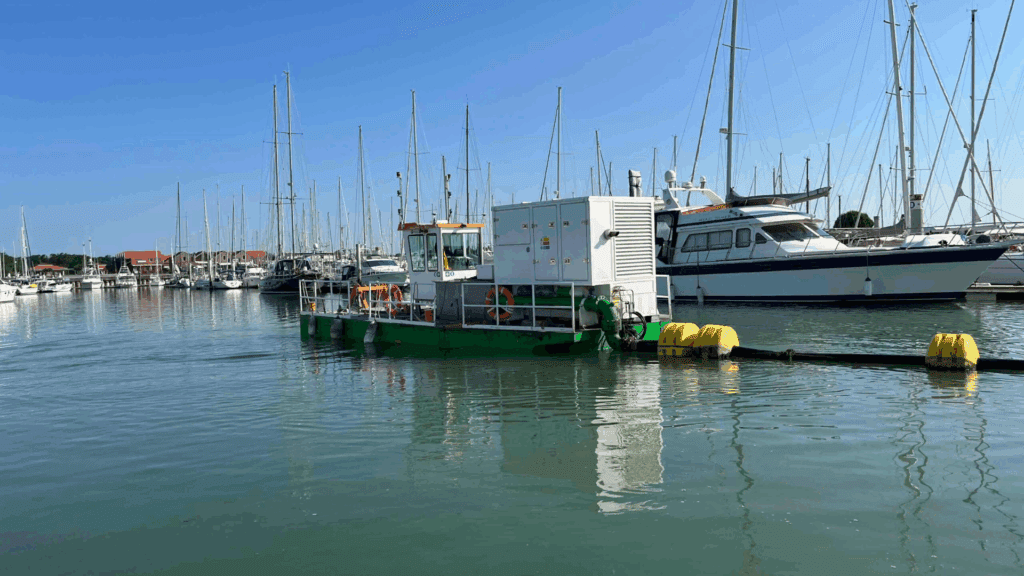Publication date: 28/08/2024
Regular de-silting: a necessity
Environmental constraints
At Le Verdon-sur-Mer, Port Médoc is a marina particularly prone to silting. This is due to its location at the mouth of the Gironde estuary, where the Garonne and Dordogne rivers and their many tributaries meet.
Every year, the surrounding rivers and streams transport a great deal of material that becomes sediment as it flows along. Aided by movements, tides and currents, sediment eventually settles to the bottom, impacting the depth of channels and canals.
“The phenomenon is not confined to Port Médoc,” explains Antoine Poinsot, director of the Verdon marina. ” It’s a problem often encountered on the Atlantic coast, particularly within a 50-kilometer radius of Port Médoc. The Charente, Seudre and Sèvre Niortaise rivers, for example, are the source of a great deal of sediment, particularly after seasons of heavy flooding. Here, all the harbours are silted up enormously. So, the solution is to dredge.”
Antoine Poinsot, Port Médoc manager
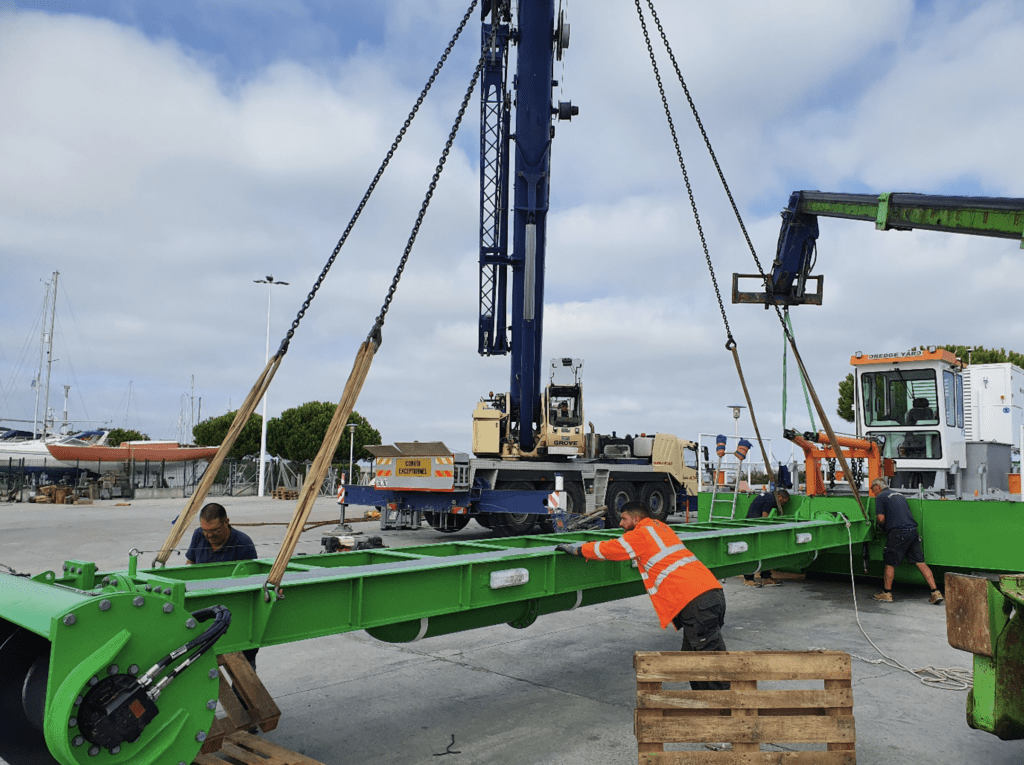
Dredging a marina is the removal of material that has settled to the bottom of one or more harbor basins, to re-establish the water level required for use of the harbour. Excavation can be carried out from land or from the water. In the latter case, it is carried out by a specialized vessel known as a dredger.
Variable dredging rates
“Some ports simply dredge every two, three or four years”, explains Antoine Poinsot. “At Port Médoc, we carry out mud and sand dredging operations every year, for several months at a time. Port dredging is only authorized for a specific period, part of the year. So we have to organize the work accordingly.”
One objective at Port Médoc: to ensure the comfort of all yachtsmen in their activities
If dredging is carried out every year at Port Médoc’s port facilities, it is above all to continue offering the best possible services to marina users. In fact, the aim of the work is to maintain a water depth of 2 to 3 meters from one side of the basin to the other, to enable all vessels to be accommodated. This operation is essential for the circulation of small- and medium-draft boats in Port Médoc, as well as for easy mooring in the right place for them.
Harbour dredging: a skill of Le Verdon-sur-Mer’s teams
While most French marinas call on one or more outside companies to dredge their areas, the Port Adhoc network member harbour benefits from the necessary in-house resources.
The Port du Verdon not only has its own equipment, but also the human resources to carry out the entire project. Each year, two boats and numerous port agents are mobilized.
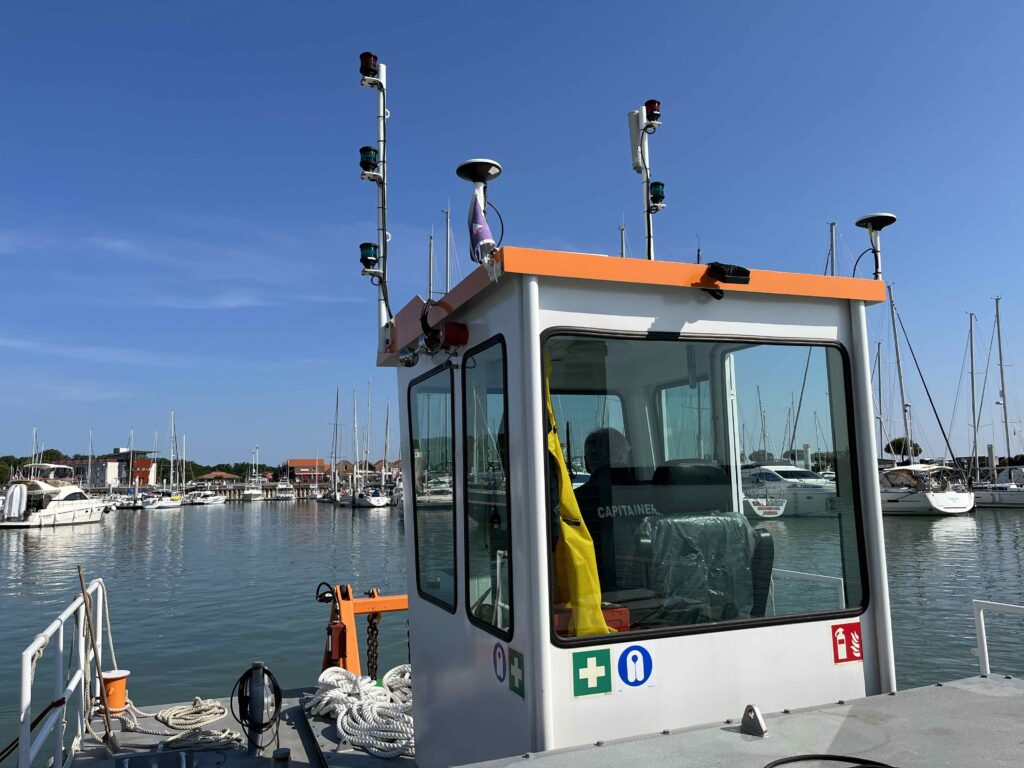
The use of a dredger and a service boat
The director of Port Médoc confides:
“We’ve always done our own dredging. For several years, we used an old dredger… probably the one that dug the harbour when it was first built. Then, in 2022, we chose to acquire a new, more specific dredger, which we called La Remora.”
According to Antoine Poinsot, the new equipment is smaller, but also better adapted to the site and the work to be carried out:
“We chose an existing dredger base, which we modified to meet our requirements. Motorized and more mobile than its predecessor, our new dredger now offers a depth dredging capacity that perfectly matches our needs. Both the installation and removal of the crane have been optimized, enabling us to achieve a very respectable output.”
This compact dredger, offered by Dredge Yard, is capable of operating beneath pontoons—a real advantage when dredging campaigns are carried out regularly, as in Port Médoc.
Dredge Yard is an international provider of innovative dredging solutions, renowned for the performance and reliability of its equipment. Based in the Netherlands, the company designs, manufactures, and supplies a complete range of equipment—suction dredgers, booster stations, spare parts—tailored to a variety of projects, from port maintenance to environmental dredging.
A service boat called La Cagnotte works alongside La Remora: it enables port agents to assist the dredger and its pilot in the work, and to transport the various parts of the machine: pieces of pipe, anchors, fuel reserves…
Work mobilizing the entire port team
The actual dredging work involves two port agents: one is at the controls of the dredger, while the second is at the helm of the service boat.
But, as Antoine Poinsot points out, the preliminary studies and implementation of operations mobilize the entire port team:
“There are bathymetric surveys to be carried out before the work begins, planning the work, calculating the time the operations will take, moving the boats, managing breakdowns, reprogramming… for all this, each harbor agent has a role to play for several months. The support of the harbour master’s office team is indispensable: the agents take care of communication with boaters, organizing temporary moorings, moving boats, transmitting access codes for breakdowns… Port Médoc is one of the only marinas in France to have its own dredger, and to dredge its own spaces thanks to the skills of the entire team. We’re very proud of this.”
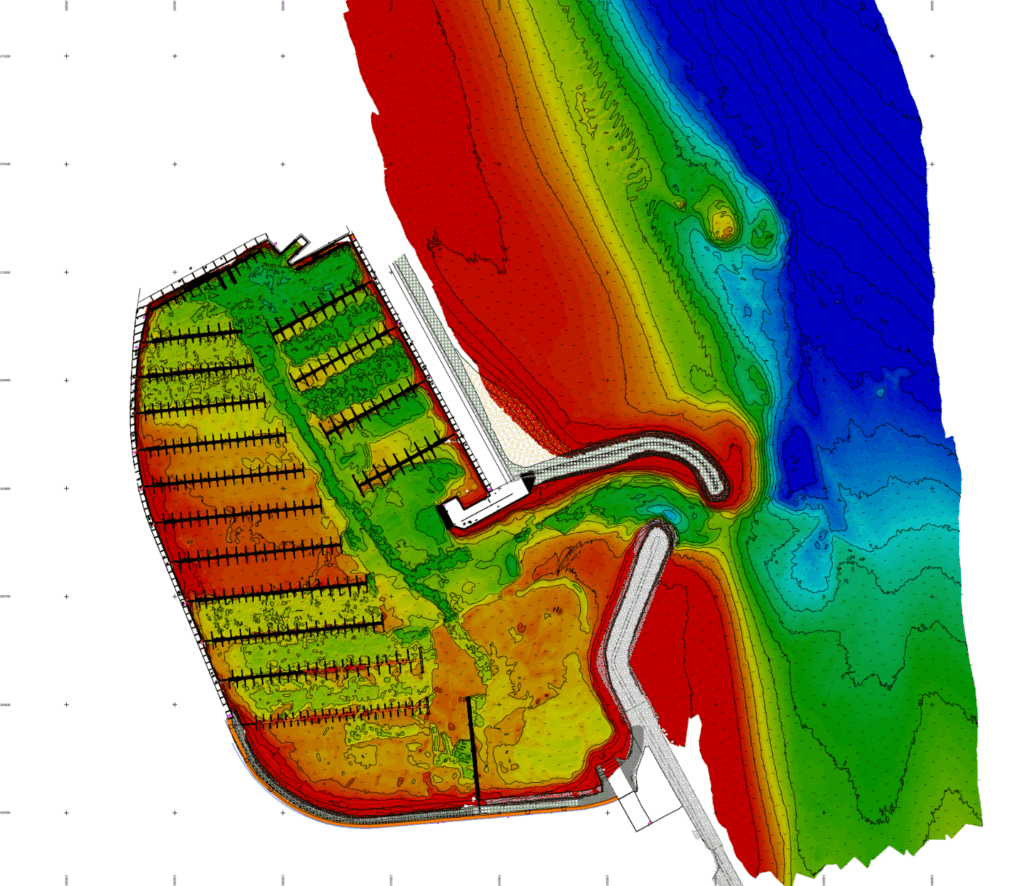
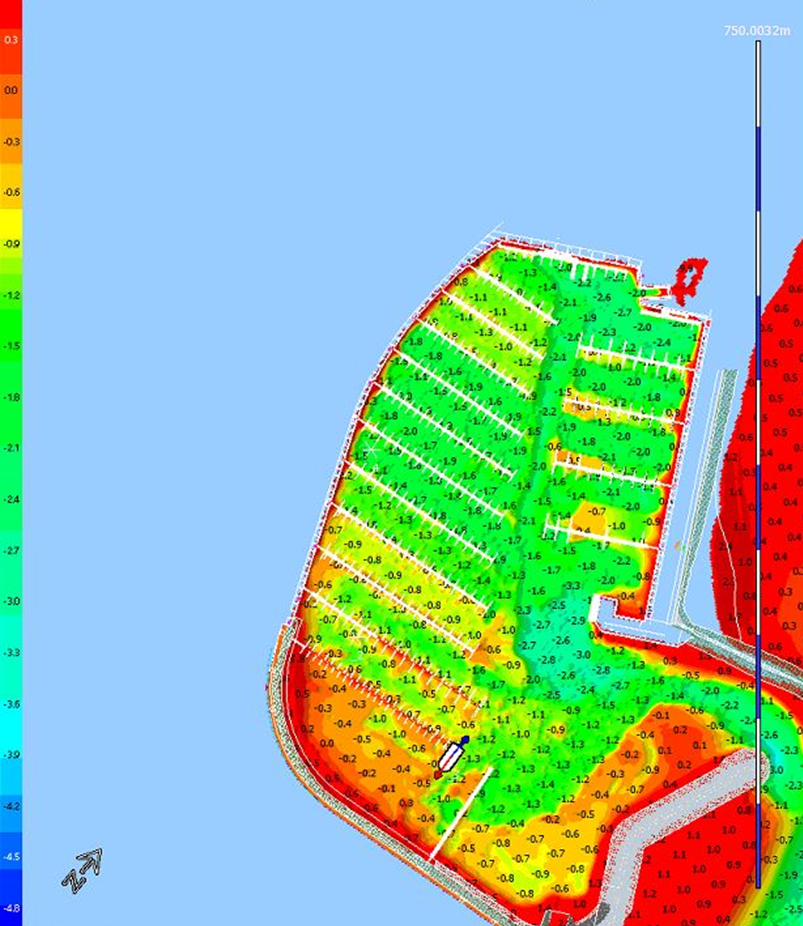
Dredging that never prevents port use
During Port Médoc’s three annual winter dredging campaigns, the activities of marina users are never impeded. All operations are carried out in such a way as not to impose any specific constraints on yachtsmen:
- The dredging of the marina is carried out step by step, and the different areas of the harbour are treated over a period of several weeks. When the area around a breakwater is about to be dredged, yachtsmen using that breakwater are contacted and asked to move their boats. This is only for as long as it takes for their berth to be serviced by our teams. If they are not available to make this change, port staff can take charge of towing the vessel to a temporary berth, with their consent. Traffic in the port remains possible at all times, and yachtsmen can, of course, still use their boats to enjoy sailing, whatever the time of day.
- Ships wishing to visit Port Médoc for a stopover are also always welcome. During the works, the harbour master’s office will keep visitor berths available to accommodate them according to their draught, so that everyone can enjoy the facilities.
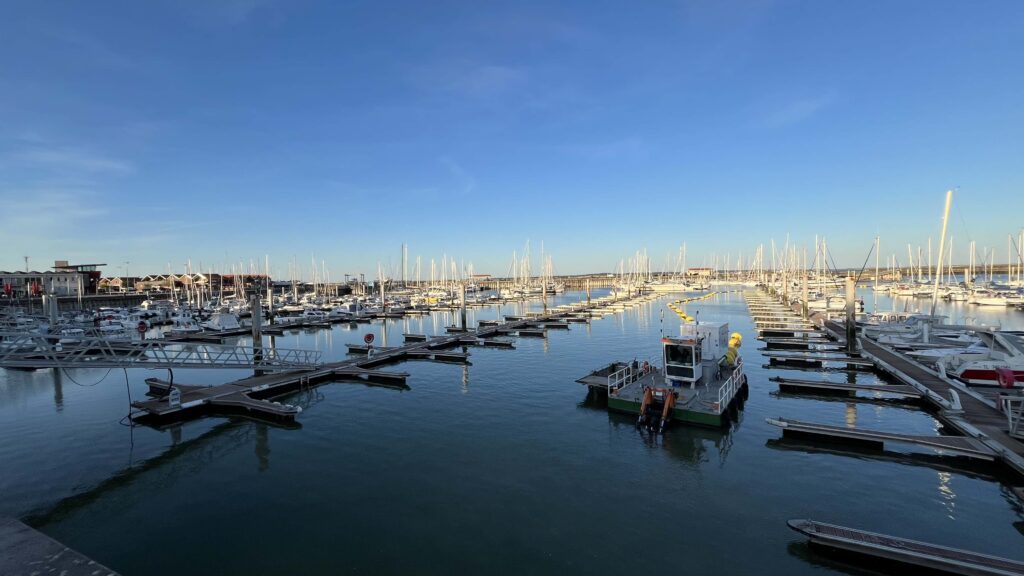
Are you planning to moor your motorboat or sailboat in our port at Le Verdon-sur-Mer, for a short or long time? Get in touch with our teams and let’s work on your project together!

